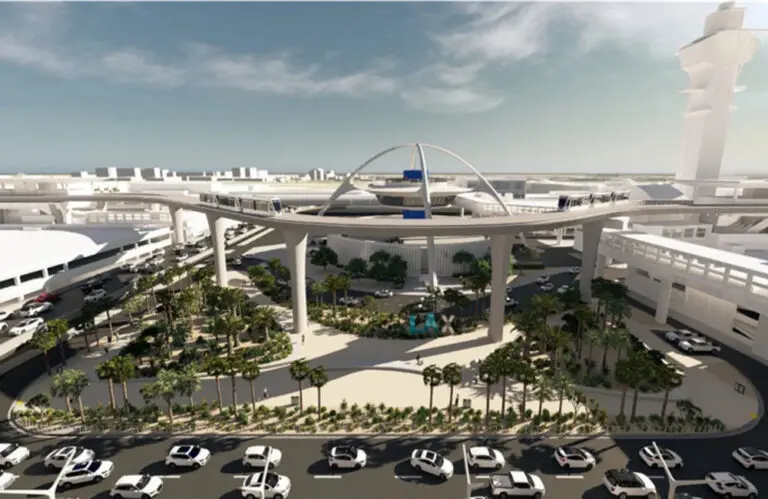Qantas has hit a major checkpoint in its fleet renewal journey as its first Airbus A321XLR enters final assembly at Airbus’ Hamburg facility. This sleek addition to the fleet represents a bold step into a future of enhanced passenger comfort, operational efficiency, and ambitious routes.
According to Qantas, the aircraft is on track for delivery in April 2025. Once in Australia, it will kick off a new chapter for the carrier’s domestic operations, replacing the trusty Boeing 737s that have been the backbone of Qantas’ fleet.
What’s so special about the A321XLR?
The Airbus A321XLR is designed for a smoother, quieter, and more efficient flying experience. Not only does it burn less fuel per seat compared to its predecessors, but it also boasts a longer range—up to 8,700km compared to the 737’s capabilities.
Inside, passengers can look forward to wider seats, bigger windows, fast and free Wi-Fi, and overhead bins capable of swallowing 60% more carry-on luggage.
David Caon, the designer behind the cabin’s layout, has managed to maximise passenger comfort without compromising on space between seats. And with a 13% boost in seat capacity, including a 66% increase in premium seats, the A321XLR is a win-win for both customers and Qantas’ bottom line.
Big plans for a big aircraft
When VH-OGA, affectionately named Great Ocean Road, touches down next year, it will initially operate on domestic routes traditionally served by the Boeing 737. Over time, the aircraft’s impressive range opens up the possibility of direct routes to exciting destinations across Southeast Asia and the Pacific Islands.

“These new aircraft are part of the biggest domestic fleet renewal program in Qantas’ history, which is bringing significant improvements for customers and career opportunities for our people,” Qantas Group CEO Vanessa Hudson said.
“New aircraft mean more jobs, training and promotion opportunities for our people, and we’ll be training more than 240 pilots on the new aircraft over the next three years,” she said.
In preparation, Qantas’ engineering team has been busy receiving 800 pieces of tooling, while pilots have been logging hours on simulators to ensure they’re ready to handle the new flight deck.
Built for efficiency
Every inch of the A321XLR tells a story of efficiency. Major components of the aircraft are being constructed across specialist factories in Europe before being assembled in Hamburg. The process, which takes about a month, culminates in the aircraft receiving its engines and heading to the paint shop. And let’s not forget the signature tail—it’s pre-painted separately due to its complexity.
Powered by Pratt & Whitney Geared Turbo Fan engines, the A321XLR not only reduces noise pollution but also slashes fuel consumption. These improvements align with Qantas’ sustainability goals, offering greener skies without sacrificing performance.
A nod to Australian icons
Qantas has turned to its employees for inspiration in naming its A321XLR fleet. The names celebrate Australia’s iconic walks, rivers, and roads—a fitting tribute to the airline’s commitment to connecting the vast Australian landscape.
With the first aircraft already named Great Ocean Road, we can expect future A321XLRs to bear equally evocative names that highlight Australia’s unique geography and cultural identity.

Earlier this month, Iberia became the first airline to operate a commercial flight with the A321XLR. While Europe may have set the pace, Qantas is on track to make a splash in the Asia Pacific region, where it will debut this cutting-edge aircraft.
For Qantas customers, this means being among the first in the region to experience the A321XLR’s game-changing features. And for travel professionals, it’s a sign of the exciting possibilities that lie ahead.
NDC and you
Qantas last week announced it is introducing the International Air Transport Association’s (IATA) New Distribution Capability (NDC) technology from mid-2025. This shift aims to enhance fare flexibility, offering agents access through multiple systems: traditional EDIFACT, Standard NDC, and Premium NDC.
Cameron Wallace, Qantas Group International CEO, says NDC will deliver “more fare options and a personalised experience,” including detailed Qantas Frequent Flyer benefits. Despite these advantages, some agents express concerns about the complexity of NDC and its impact on operations.
To address this, Qantas is engaging with stakeholders and providing extensive lead time to adapt. Training and partnerships with major global distribution systems are also in place to support the transition. Flight Centre CEO Graham Turner describes NDC as “the future for our industry.”





